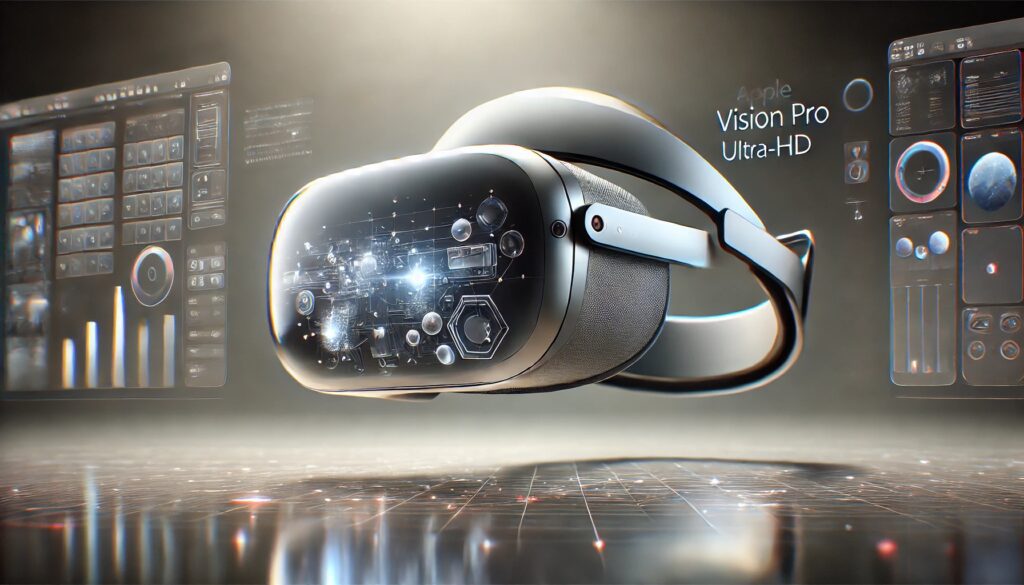
Synchron’s BCI Pioneers a New Frontier in Neurotechnology
The fusion of neurotechnology and consumer electronics has taken a monumental leap forward with Synchron’s groundbreaking achievement. The company has successfully enabled mind control of Apple’s Vision Pro headset using its cutting-edge brain-computer interface (BCI). This development, highlighted by Mac Daily News, is not just a technological marvel but also a beacon of hope for individuals suffering from severe paralysis, such as those with amyotrophic lateral sclerosis (ALS). Let’s dive deeper into how this technology works, its implications, and the potential future it heralds.
The Vision Pro: Apple’s Technological Marvel
Apple’s Vision Pro headset is a sophisticated device designed to offer users an immersive experience, blending augmented reality (AR) and virtual reality (VR). It features advanced spatial computing capabilities, enabling users to interact with digital content as if it were part of their physical environment. Typically, this interaction requires hand gestures, eye movements, or voice commands—all of which assume the user has the physical ability to perform these actions.
For individuals with ALS or other debilitating conditions, these input methods can be impossible to use. This is where Synchron’s innovation comes into play, fundamentally altering the way such users can engage with technology.
Understanding Brain-Computer Interfaces (BCIs)
Brain-computer interfaces are systems that establish a direct communication pathway between the brain and an external device. The core principle behind BCIs is the ability to decode neural signals—electrical impulses generated by the brain—and translate them into commands that a computer or other device can understand.
Synchron’s BCI stands out due to its minimally invasive approach. Unlike other BCIs that require open-brain surgery, Synchron’s device can be implanted through a catheter-based procedure similar to angiography. This makes the process safer and more accessible to a broader range of patients.
Once implanted, the device begins to pick up on the neural activity related to specific thoughts or intentions. These signals are then processed and translated into digital commands, which can be used to control the Vision Pro headset. The process is near real-time, allowing for smooth, responsive interaction with the device.
Synchron’s Journey: From Concept to Reality
Synchron’s path to this breakthrough has been a testament to years of research and development in the field of neurotechnology. The company has focused on creating BCIs that are not only effective but also practical for real-world use. The development process involved extensive clinical trials, including testing on individuals with severe paralysis.
These trials have shown that patients can effectively control devices using their thoughts alone, demonstrating the viability of BCI technology in everyday applications. Synchron’s approach, which emphasizes safety and usability, has been a crucial factor in achieving this success.
Real-World Impact: Transforming Lives
The implications of this technology for individuals with ALS and other forms of paralysis are profound. ALS is a progressive neurodegenerative disease that affects nerve cells in the brain and spinal cord, leading to the gradual loss of muscle control. As the disease progresses, patients may lose the ability to move, speak, or even breathe without assistance.
For these individuals, the ability to control the Vision Pro headset with their minds offers a new avenue for communication and interaction. The headset’s AR and VR capabilities can be used for a variety of purposes—from accessing the internet and controlling smart home devices to participating in social interactions and even experiencing virtual travel.
Moreover, this technology can significantly enhance the quality of life for ALS patients by providing them with greater autonomy. Instead of relying on caregivers for every aspect of their interaction with the world, patients can now use the Vision Pro to perform tasks independently, restoring a sense of control over their lives.

Broader Implications: A New Paradigm for Accessibility
While the immediate impact of Synchron’s technology is on individuals with severe paralysis, the potential applications extend far beyond this group. Brain-computer interfaces could revolutionize how we interact with all kinds of technology, making devices more accessible to people with a wide range of disabilities.
Imagine a world where the standard input methods—keyboards, mice, touchscreens—are no longer the primary means of interacting with technology. Instead, devices could be controlled through thought alone, enabling faster, more intuitive interaction. This could be particularly beneficial for individuals with mobility impairments, visual impairments, or speech disorders.
In the future, BCIs could be integrated into smartphones, computers, and other everyday devices, making technology more inclusive and accessible. This would mark a significant shift towards universal design, where products are designed to be usable by as many people as possible, regardless of their abilities.
Ethical Considerations: Navigating the Complexities
As with any breakthrough technology, ethical considerations are paramount. The ability to read and interpret neural signals raises important questions about privacy, consent, and data security. Brain data is incredibly sensitive, and there is a need to ensure that it is protected from misuse or unauthorized access.
Additionally, the implementation of BCIs must be done with a clear understanding of the ethical implications of altering or augmenting human cognition. As we move towards a future where brain-computer interfaces become more common, it is crucial to develop guidelines and regulations that protect users’ rights and ensure that the technology is used responsibly.
The Road Ahead: Challenges and Opportunities
Despite the incredible promise of BCI technology, there are still significant challenges to overcome. One of the primary challenges is the accuracy of neural signal interpretation. The human brain is extraordinarily complex, and while BCIs have made great strides, they are not yet perfect. There is ongoing research aimed at improving the accuracy and reliability of these systems.
Another challenge is scalability. Currently, the implantation of BCIs requires specialized medical procedures, limiting the technology’s availability. To reach a broader audience, researchers and developers must work on making these devices easier to produce, implant, and maintain.
Finally, there is the challenge of user adaptation. Learning to control a device with your thoughts requires training and practice. While some users may take to it quickly, others might find it more challenging. Developers will need to create intuitive user interfaces and training programs to help users adapt to this new way of interacting with technology.
Conclusion: A Glimpse into the Future
Synchron’s achievement in enabling mind control of Apple’s Vision Pro headset is more than just a technological milestone; it’s a glimpse into the future of human-computer interaction. By bridging the gap between the brain and digital devices, Synchron is paving the way for a world where accessibility, inclusivity, and autonomy are central to the design of new technologies.
As we look to the future, the possibilities for brain-computer interfaces seem limitless. From transforming the lives of individuals with severe paralysis to revolutionizing how we interact with technology, BCIs have the potential to reshape our world in ways we are only beginning to imagine.
For a deeper dive into Synchron’s technology and its implications, you can explore more detailed coverage at Mac Daily News.





